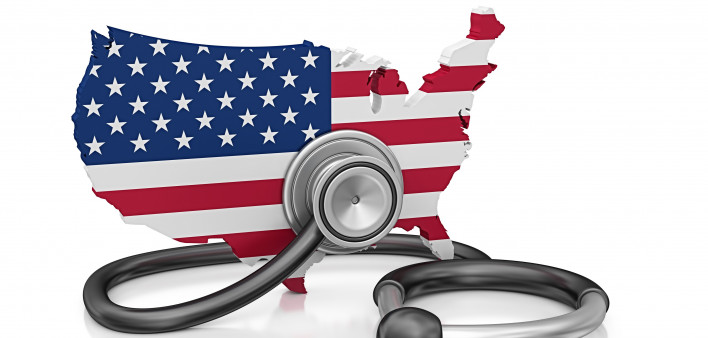Tuesday, March 23, marked the 11th anniversary of the Affordable Care Act (ACA), the health care law often referred to as Obamacare. President Biden seized the occasion to announce that he was extending the current special enrollment period an additional three months, reports NPR, meaning people can sign up for health insurance exchanges until August 15.
Since early enrollment opened February 15, more than 200,000 people have signed up for insurance on HealthCare.gov, according to Politico. But that’s a blip compared with how many more people will be insured as a result of the groundbreaking changes ahead for the ACA thanks to the $1.9 trillion COVID-19 stimulus relief law recently passed by Democrats.
“When I ran for president, I promised to build on the foundation of the Affordable Care Act. And just 50 days into my Administration, we delivered on that promise with the American Rescue Plan. Help is here.” — President Biden marking the anniversary of the Affordable Care Act pic.twitter.com/7QtDqziPIS
— The White House (@WhiteHouse) March 24, 2021
Titled the American Rescue Plan, the stimulus law includes major provisions that will boost the ACA by
- Expanding Medicaid,
- Lowering deductibles,
- Paying Americans’ subsidies for health insurance, and
- Covering all the costs of COBRA, the program that extends employee-sponsored health insurance for people who have lost their job—a far too common experience during the shutdowns related to COVID-19.
According to a PBS NewsHour interview with Julie Rovner of Kaiser Health News, the stimulus law gives rise to the largest changes to the ACA since it became law. The stimulus law sets aside $34 billion to expand subsidies for people eligible for health insurance under the ACA who might not have been able to afford the premiums because they earn too much to have previously qualified for aid. Additionally, the expansion would increase the subsidies already going to lower-income . (The Kaiser Family Foundation offers an online tool to help you calculate the costs of health insurance premiums.)
As the Biden Administration highlights how the American Rescue Plan increases ACA premium help, use our calculators to see how it varies by age, income, and zip code.
— Larry Levitt (@larry_levitt) March 23, 2021
Premium help pre-ARP:https://t.co/R37kueARhE
Premium help post-ARP:https://t.co/s0X0bRN72O
The COVID-19 relief plan also entices states to expand Medicaid if they hadn’t already done so. Specifically, states would receive extra federal money for their current Medicaid recipients. However, this federal funding, along with the money for ACA subsidies, would end in two years, noted PBS. This likely sets up a future political fight, but the hope is that with more people getting coverage, elected officials on either side of the aisle would not want to take the unpopular stand of taking away benefits.
In addition to offering health insurance marketplaces, the ACA protects people with preexisting conditions so they cannot be denied care and insurance. What’s more, Section 1557 of the ACA also “prohibits discrimination on the basis of race, color, national origin, sex, age, or disability in certain health programs or activities.” Biden signed an executive order in January to expand nondiscrimination protections and to ensure they include gender identity and sexual orientation.
As reported in late January, Biden signed an executive order to open enrollment in health insurance exchanges for three months, from February 15 to May 15, as well as to promote the exchanges. The goal was to promote and strengthen the ACA and Medicaid for the benefit of the millions of Americans who lost their health insurance when they lost their jobs due to the COVID-19 pandemic.
Trump had diminished the enrollment period—which traditionally begins in November—to a mere six weeks. To further harm the ACA, the Trump administration did not promote the programs or offer enrollment assistance.
If ACA Marketplace enrollment is re-opened, more than 1/2 of the 4M #uninsured people who could get a free bronze plan live in TX, FL, NC or GA
— KFF (Kaiser Family Foundation) (@KFF) January 27, 2021
Other states with large shares of uninsured who could get such a plan: AL(53%), WY(49%), SD(47%) and NE (46%) https://t.co/jA6J4t4Lya pic.twitter.com/3Se1EZnHR1
A January report from the Kaiser Family Foundation found that nearly 15 million people are uninsured but eligible for a basic health plan (not including Medicaid). Of this population, 4 million could receive free plans through Obamacare, and another 5 million are eligible for health care subsidies.
In related news see “COVID-19 Relief Package Includes Expansion of Health Care Coverage,” “Medicaid Expansion, Ryan White Are Lifelines for People With HIV,” “COVID-19 ‘Long-Haulers’ Worry About Coverage, Costs” and “10 Years After the Affordable Care Act, More Latinos Have Health Insurance.”







Comments
Comments